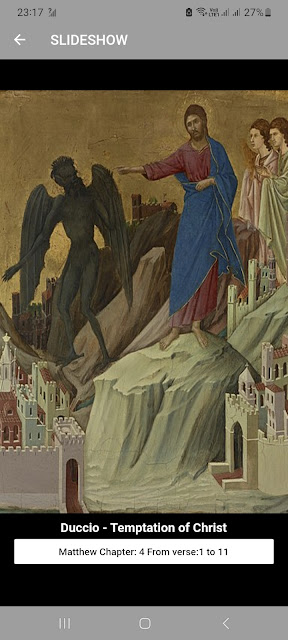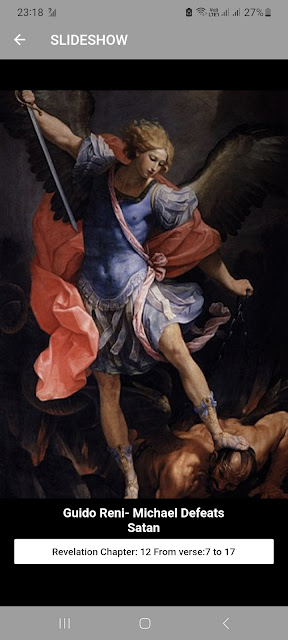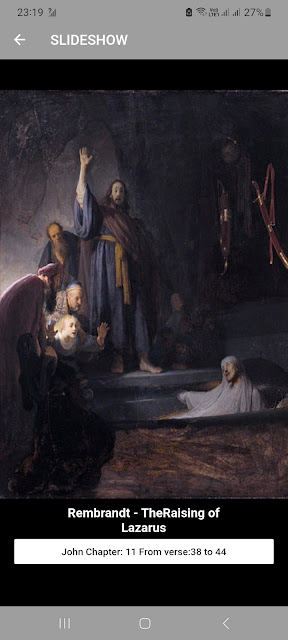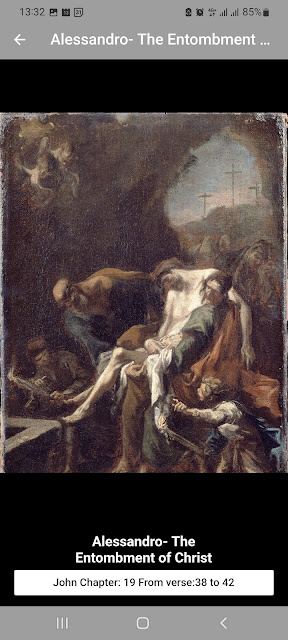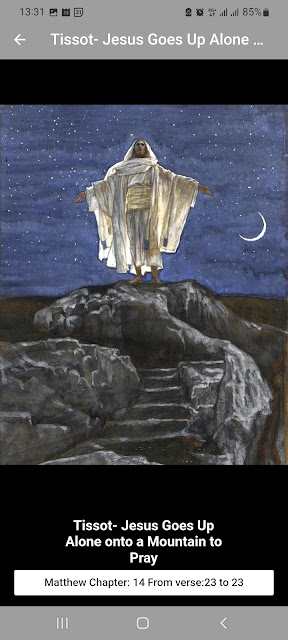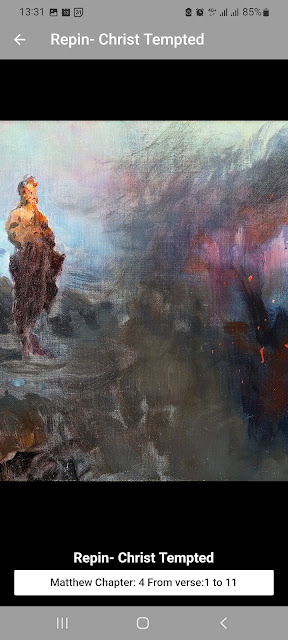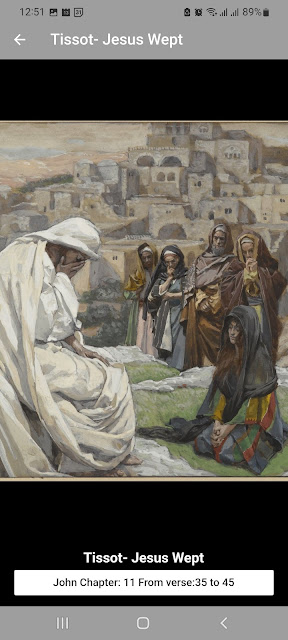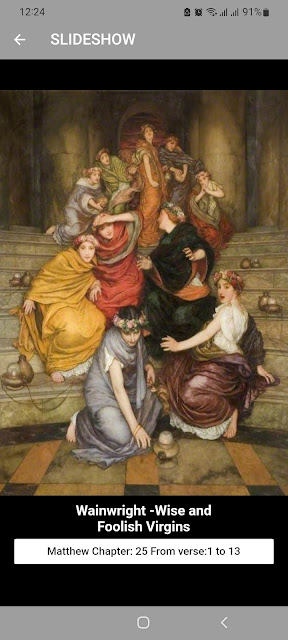1. Carravagio -The entombment of Christ
View more Images here
The Entombment of Christ is a painting by the Italian Baroque artist Caravaggio, created between 1602 and 1603. It is an oil on canvas painting that depicts the scene of Jesus Christ's entombment, after his crucifixion. The painting is currently on display in the Pinacoteca Vaticana, in Vatican City.
The Entombment of Christ is a dramatic and emotional painting that captures the grief and sorrow of the moment. The painting is full of contrasts, such as the light and dark, the living and the dead, the hope and the despair. The figures in the painting are rendered in a realistic style, and they are shown in a variety of emotional states. The painting is a powerful and moving depiction of one of the most important events in Christian history.
Caravaggio was a master of chiaroscuro, the use of strong contrasts between light and dark. In The Entombment of Christ, Caravaggio uses chiaroscuro to create a sense of drama and emotion. The figures in the painting are bathed in light, while the background is dark. This creates a sense of isolation and loneliness, which emphasizes the grief of the moment.
The Entombment of Christ is a powerful and moving painting that captures the grief and sorrow of the moment. The painting is full of contrasts, such as the light and dark, the living and the dead, the hope and the despair. The figures in the painting are rendered in a realistic style, and they are shown in a variety of emotional states. The painting is a powerful and moving depiction of one of the most important events in Christian history.
2. Duccio Temptation of Christ
The Temptation of Christ is a painting by the Italian painter Duccio di Buoninsegna, created between 1308 and 1311. It is one of a series of panels illustrating the life of Christ that was painted for the Maestà, a huge double-sided altarpiece commissioned for the high altar of Siena Cathedral. The painting is currently on display in the Frick Collection, in New York City.
The Temptation of Christ depicts the scene from the Gospels of Matthew and Luke, in which Jesus is tempted by the devil in the desert after his baptism. In the painting, Jesus is shown standing on a rocky outcrop, surrounded by barren landscape. The devil is shown to his left, in the form of a black, hairy, winged demon. The devil is offering Jesus "all the kingdoms of the world" if he will worship him. Jesus is shown rejecting the devil's offer, turning him away with his pointing right hand.
The painting is notable for its use of color and symbolism. The use of gold leaf and bright colors creates a sense of opulence and luxury. The devil is shown in black, which is traditionally associated with evil. Jesus is shown in white, which is traditionally associated with purity and goodness. The painting also contains a number of symbolic elements, such as the rocky outcrop, which represents the challenges that Jesus faced in his life, and the barren landscape, which represents the emptiness of sin.
The Temptation of Christ is a powerful and moving painting that captures the drama of the moment. The painting is full of symbolism and meaning, and it is a reminder of the importance of resisting temptation and following the path of righteousness.
3. Guercino Return of the prodigal son
The Return of the Prodigal Son is a painting by the Italian Baroque artist Guercino, created between 1619 and 1620. It is an oil on canvas painting that depicts the scene from the Gospel of Luke, in which a younger son squanders his inheritance and returns home to beg his father's forgiveness. The painting is currently on display in the Kunsthistorisches Museum, in Vienna.
The painting is notable for its use of light and shadow, its dramatic composition, and its emotional intensity. The painting is full of contrasts, such as the light and dark, the young and old, the rich and poor. The figures in the painting are rendered in a realistic style, and they are shown in a variety of emotional states. The painting is a powerful and moving depiction of one of the most famous parables in the Bible.
The painting is divided into two main parts. On the left, the younger son is shown returning home, dressed in rags and covered in dirt. He is kneeling before his father, who is dressed in fine clothes and has a halo around his head. The father is reaching out to his son with a loving gesture. On the right, the older son is shown standing in the doorway, looking on with anger and resentment. He is dressed in fine clothes, but he is not wearing a halo. The older son is clearly jealous of his younger brother, who has been forgiven for his sins.
The painting is a powerful reminder of the importance of forgiveness and the love of God. The father in the painting is a symbol of God's love, which is unconditional and everlasting. The painting is a call to all Christians to forgive those who have wronged them, just as God has forgiven us.
4. Guido Reni Michael defeats Satan
The Archangel Michael Defeating Satan is an oil on canvas painting by the Italian Baroque artist Guido Reni, created between 1635 and 1636. It is currently on display in the Pinacoteca Nazionale di Bologna, in Bologna, Italy.
The painting depicts the Archangel Michael defeating Satan in battle. Michael is shown as a muscular and handsome young man, dressed in a Roman military cloak and cuirass. He is wielding a flaming sword, and he is trampling Satan underfoot. Satan is shown as a hideous and monstrous creature, with horns, wings, and a tail. He is writhing in pain, and he is begging for mercy.
The painting is a powerful and dramatic depiction of the battle between good and evil. Michael is a symbol of good, and Satan is a symbol of evil. The painting is a reminder that good will always triumph over evil, no matter how powerful or how seemingly insurmountable the forces of evil may seem.
The painting is also a reminder of the importance of faith and hope. Michael is shown as a victorious figure, and his victory is a symbol of the victory of good over evil. The painting is a call to all Christians to have faith and hope, even in the darkest of times.
5. Hagia Sophia Virgin and Child
The Virgin and Child mosaic is located in the apse semi dome of Hagia Sophia. It was created in the 9th century by Byzantine artists, and it is one of the most famous mosaics in the world. The mosaic depicts the Virgin Mary holding the Christ Child on her lap. Mary is dressed in a blue robe and a red cloak, and she is wearing a crown. The Christ Child is also dressed in a blue robe, and he is holding a scroll in his hand. The mosaic is surrounded by a golden frame, and it is set against a blue background.
The Virgin and Child mosaic is a beautiful and moving work of art. It is a reminder of the importance of the Virgin Mary in Christianity, and it is a symbol of hope and salvation. The mosaic is also a reminder of the Byzantine Empire's artistic and cultural achievements.
The mosaic was damaged during the Ottoman conquest of Constantinople in 1453, but it was restored in the 19th century. It is now one of the most popular tourist attractions in Istanbul.
6. Novgorod school Madonna and Child
View more Images here
The Novgorod School is characterized by its use of bright colors, its bold outlines, and its simplified forms. The artists of the Novgorod School were also known for their use of gold leaf, which they used to create a sense of luxury and opulence.
One of the most famous icons from the Novgorod School is the Madonna and Child. This icon is believed to have been painted in the 13th century, and it is now on display in the State Tretyakov Gallery in Moscow. The icon depicts the Virgin Mary holding the Christ Child on her lap. Mary is dressed in a blue robe and a red cloak, and she is wearing a crown. The Christ Child is also dressed in a blue robe, and he is holding a scroll in his hand.
The Madonna and Child is a beautiful and moving work of art. It is a reminder of the importance of the Virgin Mary in Christianity, and it is a symbol of hope and salvation. The icon is also a reminder of the Novgorod School's artistic and cultural achievements.
7. Poussin Baptism of Christ
The Baptism of Christ is a painting by the French artist Nicolas Poussin, created between 1641 and 1642. It is an oil on canvas painting that depicts the scene from the Gospels of Matthew and Mark, in which Jesus is baptized by John the Baptist in the Jordan River. The painting is currently on display in the National Gallery of Art, in Washington, D.C.
The painting is notable for its use of classical form and its serene and harmonious composition. The figures in the painting are arranged in a pyramid shape, with Jesus at the top. The landscape is also carefully composed, with the river Jordan flowing through the center of the painting. The painting is full of light and color, and the figures are rendered in a realistic style.
The Baptism of Christ is a beautiful and moving painting that captures the significance of the event. The painting is a reminder of the importance of baptism, which is a sacrament that symbolizes the washing away of sin and the beginning of a new life in Christ. The painting is also a reminder of the importance of faith, which is the foundation of the Christian life.
Poussin was a master of classical painting, and The Baptism of Christ is one of his most famous works. The painting is a beautiful and moving depiction of one of the most important events in Christian history.
8. Rembrandt Baptism of the Eunuch
View more Images here
The painting is notable for its use of light and shadow, its dramatic composition, and its emotional intensity. The painting is full of contrasts, such as the light and dark, the young and old, the rich and poor. The figures in the painting are rendered in a realistic style, and they are shown in a variety of emotional states. The painting is a powerful and moving depiction of one of the most famous stories in the Bible.
The painting is divided into two main parts. On the left, the eunuch is shown riding his chariot, dressed in fine clothes. He is holding a scroll in his hand, which contains the words of Isaiah 53:7-8. On the right, Philip is shown baptizing the eunuch in a river. Philip is dressed in simple clothes, and he is shown with a halo around his head. The eunuch is shown with his hands raised in the air, and he is looking up at the sky.
The painting is a powerful reminder of the importance of faith and the love of God. The eunuch in the painting is a foreigner, and he is a eunuch, which was considered to be a disability in the ancient world. However, he is shown being baptized by Philip, who is a Jew. This shows that God's love is for everyone, regardless of their race, religion, or social status.
The painting is also a reminder of the importance of following the word of God. The eunuch is shown reading the words of Isaiah, which prophesy the coming of the Messiah. He is then baptized by Philip, who is a messenger of the Messiah. This shows that the word of God is powerful, and that it can lead people to salvation.
The Baptism of the Eunuch is a beautiful and moving painting that captures the significance of the event. The painting is a reminder of the importance of faith, love, and the word of God.
9. Rembrandt The raising of Lazarus
Rembrandt's The Raising of Lazarus is an oil on canvas painting that was completed in 1632. It depicts the biblical story of Jesus raising Lazarus from the dead. The painting is currently on display at the Los Angeles County Museum of Art.
The painting is notable for its use of light and shadow, its dramatic composition, and its emotional intensity. The painting is full of contrasts, such as the light and dark, the young and old, the rich and poor. The figures in the painting are rendered in a realistic style, and they are shown in a variety of emotional states. The painting is a powerful and moving depiction of one of the most famous miracles in the Bible.
The painting is divided into two main parts. On the left, the mourners are shown gathered around the tomb of Lazarus. They are dressed in somber clothes, and they are shown with expressions of grief on their faces. On the right, Jesus is shown standing in front of the tomb. He is dressed in a white robe, and he is shown with a halo around his head. Jesus is raising his hand in a gesture of command, and Lazarus is shown emerging from the tomb.
The painting is a powerful reminder of the power of Jesus Christ. Jesus is shown raising Lazarus from the dead, which is a miracle that only God could perform. The painting is also a reminder of the importance of faith. The mourners in the painting are shown with expressions of grief on their faces, but they still have faith in Jesus. They know that he is able to raise Lazarus from the dead, and they are waiting for him to do so.
The Raising of Lazarus is a beautiful and moving painting that captures the significance of the event. The painting is a reminder of the power of Jesus Christ, the importance of faith, and the hope of resurrection.
10. Rubens Last supper
The Last Supper is a 1630–1631 oil painting by Peter Paul Rubens. It was commissioned by Catherine Lescuyer as a commemorative piece for her father. Rubens created it as part of an altarpiece in the Church of St. Rombout (Rumbold) in Mechelen. The painting depicts Jesus and the Apostles during the Last Supper, with Judas dressed in blue turning back towards the viewer and away from the table. Other than Jesus, the most prominent figure is Judas. Judas holds his right hand to his mouth with his eyes avoiding direct contact with the other figures in the painting creating a nervous expression.
Jesus is dressed in red and has a yellow halo surrounding his head with his face tilted upwards. Jesus is located centrally in the painting surrounded by his disciples with six on each side, and he holds a loaf of bread with a cup of wine in front of him. Out of all of the figures, he is the most in the light with the figures to the farthest left being the most in shadow. “The scene thus represents a perfect conflation of the theological significance of the Last Supper” meaning the conflation between the blessing of the bread and the wine while still being pivotal in the sense of revealing the betrayal.
The painting is notable for its use of bold colors, its dramatic composition, and its emotional intensity. The figures in the painting are rendered in a realistic style, and they are shown in a variety of emotional states. The painting is a powerful and moving depiction of one of the most famous events in Christian history.
The painting is currently on display at the Cathedral of Our Lady of Mechelen in Mechelen, Belgium.
11. St John of the cross Christ crucified
View more Images here
The drawing is a simple and powerful depiction of the crucified Christ. John has drawn Christ from above, looking down at the viewer. Christ's body is twisted in pain, and his head is tilted back in agony. His hands and feet are nailed to the cross, and his side is pierced with a spear. John has used only a few lines to create this powerful image, but the drawing is full of emotion.
The Christ Crucified is a reminder of the suffering that Christ endured for our salvation. It is also a reminder of the love that Christ has for us. John of the Cross was a deeply spiritual man, and his drawing is a testament to his faith. The Christ Crucified is a beautiful and moving work of art, and it is a reminder of the power of love and the importance of faith.
12. Scipione Pulzone Lamentation
View more Images here
The painting depicts the scene from the Gospels of Matthew and Mark, in which Mary Magdalene, the Virgin Mary, and other mourners lament the death of Jesus Christ. The painting is notable for its use of chiaroscuro, its dramatic composition, and its emotional intensity.
The painting is divided into two main parts. On the left, the mourners are shown gathered around the body of Jesus. They are dressed in somber clothes, and they are shown with expressions of grief on their faces. On the right, Jesus is shown lying on a stone slab. He is dressed in a white robe, and his body is covered in wounds. His head is tilted back, and his eyes are closed.
The painting is a powerful reminder of the suffering that Christ endured for our salvation. It is also a reminder of the love that Christ has for us. Pulzone was a deeply spiritual man, and his painting is a testament to his faith. The Lamentation is a beautiful and moving work of art, and it is a reminder of the power of love and the importance of faith.
13. Titian Salvatore Mundi
View more Images here
The theme was made popular by Northern painters such as Jan van Eyck, Hans Memling, and Albrecht Dürer. There are also several versions of the theme attributed to Titian, notably the one in the Hermitage Museum. One painting of the subject, simply titled Salvator Mundi, was attributed or reattributed to Leonardo da Vinci in 2011. This painting disappeared from 1763 until 1900 when it was acquired from Sir Charles Robinson. It was at the time thought to be a work by Leonardo's follower, Bernardino Luini, and was purchased for the Doughty House in Richmond, London by Sir Francis Cook.
In 2015, the painting was sold at auction for $450.3 million, setting a new record for the most expensive painting ever sold. The painting was purchased by the Saudi Prince Badr bin Abdullah bin Mohammed bin Farhan Al Saud.
The painting is currently on display at the Louvre Abu Dhabi in Abu Dhabi, United Arab Emirates.
Enjoy!

